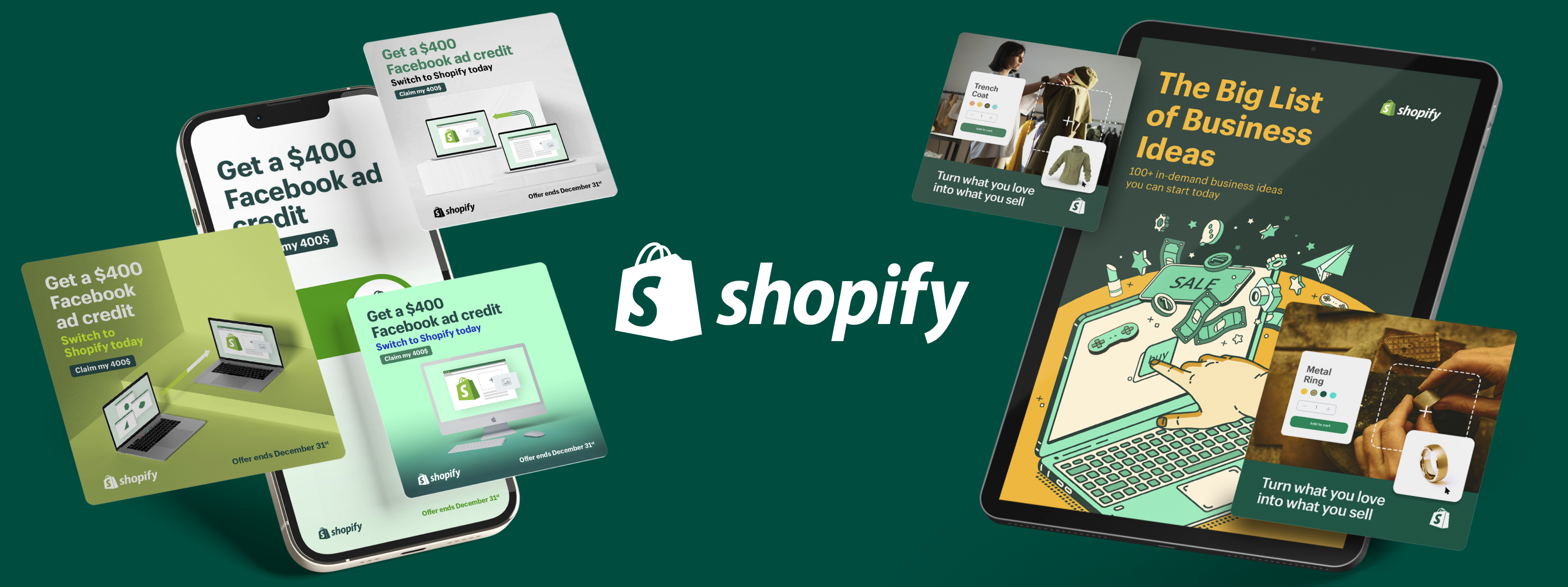Q&A with Zontee Hou: Building Digital Ad Strategies that Work


Zontee Hou, Head of Strategy at Convince & Convert, helps companies of all shapes and sizes grow through digital marketing, content marketing and social media. Across a decade of experience, she’s developed marketing strategy plans for Fortune 500 companies, including Oracle and Allstate Insurance, and executed hundreds of marketing campaigns.
We talked shop with Hou on storytelling in advertising, building digital advertising strategies and how Convince & Convert briefs designers.
What are the core elements that all successful ad designs must have?
Good ad design is specific to your target audience and has clear calls to action that appeal to the audience's motivations. And I always emphasize to our clients more storytelling in advertising gives your target audience more context.
For example, Penzeys Spices are not afraid of showcasing their political views in their storytelling. They're a values-based business. Sometimes their ads are a long blog post — like 2000 words — and that sounds completely insane. But if you buy Penzeys’ values and agree with what they’re saying, then they're the right place to buy your spices, too.
You can also tell people information that's really helpful and allows the audience to understand your product without having to do everything through words. For example, you can convey a message with color, iconography and photography—but regardless, there does need to be some form of storytelling involved.
What sort of challenges do you see marketers and advertisers facing today when it comes to their ad campaigns?
You are not competing for eyeballs just within your industry. Your customer is seeing ads from Nike and Apple and The North Face and Whole Foods… and those ads may be at a different standard than yours.
To be effective, your ads need to live up to what your target audience sees every day—meaning you need to understand what each audience segment is comparing you against in terms of ad creative.
In terms of working with designers, what information should designers be provided in order for them to be set up for success?
For our agency, when we’re working with designers we give them the client’s colors and any existing imagery so they have a sense of what's acceptable and what's not. From there, we also provide a detailed creative brief covering who the target audience is, the core messaging and what copy to use. We have a lot of clients who know what they don't want in their storytelling, which helps us make decisions and build off that.
Do you leave developing a visual concept in the designer's hands or take a very clear concept to the designer so that they're working within strict parameters?
For me, it depends on the type of client project. When we have a specific story in mind that we want to tell, I'm going to have a clear interpretation of how we want to do that visually. I think of Casper here. I didn't work with them, but they have illustrations in their ads reminiscent of children's stories. I'm sure that was conceived early on.
If it's a general informational ad, I leave that in the designer's hands. Often they'll have ideas about how to execute that I wouldn't have come up with.
When you first start working with a client, how do you determine the best digital advertising strategy for them?
In many cases, our clients are already best in class, so it's not necessarily about what competitors are doing, because that often doesn't uncover much. It's more about understanding what is working in a similar space that could be translated over here. So we have clients in insurance but are learning from financial services.
We also do visual analysis—not necessarily on the advertising side, but for general social media and digital marketing. We're working with a client right now in the decor space. When we presented visual analysis to the client, it included many other brands their ideal customer sees. .It had interior designers and architecture firms, home and garden brands, TV networks, and lifestyle networks.
You need to understand the caliber of organic and paid content your target customers consume every day. And what's going to make a difference or catch their eye because there's a lot of stuff we discount within milliseconds, especially in the online space. You have to figure out how to make your ads always say to your audience, “This is for me, I need to take a look at this.”
Can you give me an example of an ad campaign you worked on with a client and share any metrics that show results—such as why it was successful creatively?
We've been working with the University of Arizona on the launch of their COVID Watch app. We've been creating all the digital advertising around this app and focused on the idea of understanding what appeals to students.
For this project, that meant a lot of research and message testing ahead of time. We had a survey pool where we put different messaging in front of students so we could understand what resonated. The creative design reflects what students expect from the university. That included incorporating their mascots and fun, custom animated emojis into their advertising. Our team also put effort into recruiting influencers on campus, including students and organizations, so people were getting the same messages from all angles.
This is a really important part of digital advertising. Nowadays it's never on its own.
Digital advertising has to amplify and reflect what's happening with all these other channels. We were able to meet their download goals within four weeks and more than doubled that within 12 weeks.
If there was one key takeaway or piece of advice that you'd want to give creative teams about how to execute a successful digital ad, what would that be?
Don't be too enamored by your own cleverness. Often the ads I see come back from a creative team, you have to go back and say, “I'm sorry we can't use this at all.” They've done something so obscure or irrelevant to the actual audience and the core message, that somebody wouldn't even sit through two seconds of looking at the ad.
I know in every creative industry you have somebody telling you to kill your darlings, but there's absolute truth in that. If you handed the creative to your best friend or brother, will they get it in a few seconds of looking at this ad? If the answer is no, the ad is not effective. You have to go back to the drawing board and clarify what message you're trying to get across.
This interview has been condensed and edited for clarity. Learn more about ad design from Hou and others in our new guide!
Cassandra King is the former Head of Content & Community at Superside. She’s a road trip aficionado, advocate for all things glitter, and can usually be found with a camera (or snacks) in hand. Find her on IG @casssandra.king.
You may also like these

12 types of advertising design with tips & examples in 2025
Great ads can convert casual viewers into paying customers. Bad designs could send them straight to the competition. A thoughtful, eye-catching design grabs attention, builds trust and reinforces your brand identity, making every ad an essential component of a successful campaign.In 2025, advertising trends are pushing creativity to new heights, which means standing out is becoming increasingly tough. And with so many advertising channels available to marketers, deciding where to channel your budget—and which ads to develop—can be hard.Superside’s creatives are masters at creative productivity and high-converting advertising design. We asked them for notes on the 12 types of advertising design and tips and tricks to inspire your next campaign.What is advertising design?Advertising design merges marketing and graphic design to produce visual artwork specifically intended for advertisements. It involves much more than merely establishing your company’s visual brand identity. Its primary goal is to increase sales.
12 Successful Instagram Ad Examples To Inspire Your 2025
Running Instagram ads is a great way to amplify your message and deliver it to the people who will get the most value from what you offer. However, getting your ideal customer to stop their scroll and look at your ad is no easy feat.If you’re looking to create captivating and click-worthy Instagram ads, the best place to start is to look at what other industry players are doing and take some notes. Your creative should always be specific to your business and audience, but taking inspiration from others who are nailing their Instagram ads is a great place to start.To save you some time, we’ve compiled some of the best Instagram ads examples we could find and given you our two cents on what makes them stand out. Keep reading to get some ideas for your next social campaign!What Types of Instagram Ads You Can Run?Before we dive into the Instagram ad examples, it’s key to know that based on the ad format you can run different types of ads on Instagram, including:
The 14 Top Digital Ads Agencies to Explore in 2025
Digital technology and communication now dominate daily life. On average, people spend 3 hours and 15 minutes daily on their phones.With less time spent offline, advertising on digital channels has become crucial for brand survival, driving customer engagement, brand awareness and sales.With over nine years in the creative business, we at Superside have extensive experience creating original and creative digital ads for customers across the globe.We tapped into our team’s expertise to compile this comprehensive list of the 14 best digital ads agencies. But first, let’s explore why partnering with the ideal digital ads is one of the best ways to ensure business growth.Why Choosing the Right Digital Ads Agency Is Crucial






